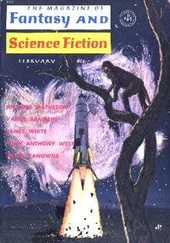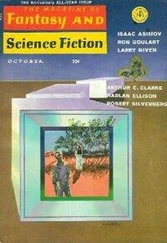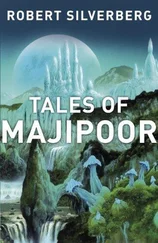Superfluous leaves and even whole unnecessary boughs dropped away automatically, and quickly crumbled into a compost that enhanced the fertility of the lava soil. Enzymes in their roots suppressed the growth of weeds. Every plant bore flowers, but the seeds that those flowers produced were sterile; only when a plant reached the natural end of its life cycle did it bring forth fertile ones, so that it could replace itself with another that soon would have the same size and form. Thus the garden remained in unchanging balance.
Whenever he learned of a beautiful tree or shrub anywhere in the world, Lord Havilbove sent for specimens of it, with roots and soil attached, and gave them to the genetic surgeons of the Castle so that they could be modified for self-maintenance. Truckloads of bright-hued ornamental minerals came to the garden also—the yellowish-green stone known as chrysocolla, and the blue one called heart-of-azure, and red cinnabar, and golden crusca, and dozens more. Each of these was used as a ground cover in a different level of the garden, the differing colors being deployed by Havilbove with a painter’s eye, so that as one stood upon the peak at Bibiroon Sweep and looked down over the entirety of the garden one saw a great splash of pale crimson here, and one of vivid yellow there, and zones of scarlet, and blue, and green, all of them with plantings complementary to the color of the ground.
Lord Havilbove’s successor, Lord Kanaba, was equally devoted to the garden, and Lord Sirruth, who came after him, was sympathetic enough to it to keep its staff in place and even expand its budget. Then came the Coronal Lord Thraym, who was at first preoccupied with ambitious building projects of his own at the Castle, but who was smitten with love for Lord Havilbove’s garden upon his first visit there. He saw to it that funds were provided to carry it to its final state of perfection. Thus it took a century or more to bring the great garden into being; but then it remained ever after as one of the treasures of the Mount, a famed sight that every inhabitant of Majipoor yearned to have the privilege of beholding at least once.
Dumafice Moal had been born in Dundilmir, just downslope from the garden’s lower tip, and from boyhood on he visited it at every opportunity he had. He never doubted that it was his destiny to be part of the garden’s staff; and now, at the age of sixty, he had more than forty years of devoted service behind him.
Self-maintaining though the garden was, it nevertheless required a staff of considerable size. Millions of people visited the garden every year; a certain amount of damage was unavoidable; paths and fountains had to be repaired, ornamental plazas tidied, stolen plants replaced. Nor was the garden safe from marauding animals that came in from outside. There was plenty of open space on Castle Mount in the districts between the Fifty Cities, where wild creatures still thrived. The forested slopes of the Mount teemed with beasts of many kinds, from hryssa-wolves and jakkaboles and slinking long-fanged noomanossi to such lesser creatures as sigimoins and mintuns and beady-eyed droles. Jakkaboles and hryssa-wolves, dangerous things that they were, posed no threat to the elegant plantings. But a pack of little burrowing droles, poking their long toothy snouts into the ground in search of grubs, could uproot an entire bed of eldirons or tanigales between midnight and dawn. An infestation of tentworms could spread ugly canopies of coarse silk over half a mile of blooming thwales and swiftly reduce the plants to naked stubs. A flock of hungry vulgises settling in the treetops to build their nests—or a swarm of ganganels—spotted cujus—
So it was Dumafice Moal’s daily task to patrol the garden from sunrise onward, searching out the enemies of the plants. It was constant warfare. For a weapon he carried a long-handled energy-thrower, tuned to its lowest power; and when he came upon some work of destruction in progress, he would apply just enough heat to drive out the forces of destruction without damaging the plantings themselves.
“Often it starts very inconspicuously,” he told his nephew. “A trace of upturned soil leads you to a tiny parade of little red insects, and if you follow along it you discover a small mound, something that a visitor wouldn’t give a second look to—but those of us who know what to look for understand that these are the hatchlings of the harpilan beetle, which, if left to its own devices for long, will—ah—see here, boy—”
He poked at the border of a row of Bailemoona khemibors with the tip of his energy-thrower. “Do you see it, Theriax—right there—?”
The boy shook his head. The boy, Dumafice Moal was beginning to believe, was not particularly observant.
He was his youngest sister’s child, from Canzilaine, virtually at the foot of the Mount. Dumafice Moal himself had never married—his devotion was to the garden—but he came from a large family, brothers and sisters and cousins scattered from Bibiroon and Sikkal down the Mount to Amblemorn, Dundilmir, and several other of the Slope Cities. From time to time some relative of his would come to see the garden. Dumafice Moal liked to take them on private tours, early in the day before the gates were open to the public, while he was making his morning rounds.
The khemibors were a southern species with bright blue flowers and glossy leaves of the same color, and they had been planted in beds of vivid orange rock, to wondrous visual effect. Dumafice Moal’s practiced eye had noted a certain dulling of the gleaming surfaces of the leaves of the plants closest to the path: a sure sign that himmis-bugs had taken up residence on their undersides. He slipped his energy-thrower under the nearest row, checking its adjustment slide carefully to make certain that the power was switched to the lowest level.
“Himmis-bugs,” he said, pointing. “We used to spray for them, but it never did much good. So we cook them instead. Watch how I proceed to make things hot for the little vermin.”
Just as he began to move the long rod about, a curious sensation at the back of his skull started to afflict him.
It was a very odd thing. It was somewhat like an itch, though not quite. He felt a mild warmth back there, and then something not so mild. A sharp stinging pain, then, as if some disagreeable insect were attacking him. But when he brushed the back of his head with his free hand he detected nothing.
He continued to prod the soil beneath the khemibors with his energy-thrower. The stinging sensation grew more intense. It became a fierce burning feeling now, highly localized—like a hot beam of light focused on a single point of his head, drilling, trying to cut its way through—
“Theriax?” he said, lurching, nearly falling.
“Uncle? Are you all right?”
The boy reached out to steady him. Dumafice Moal shrugged him away. He was beginning to feel a different sort of pain: an inward one, a bewildering distress that he could only describe to himself as a pain of the soul. A sense of his own inadequacy, of having performed his lifelong tasks poorly, of having failed the garden.
How odd, he thought. I always worked so hard.
But there was no hiding from the feeling of shame that now was pervading every corner of his spirit. It engulfed him entirely; he was sinking into it as into a dark deep pit, an abyss of guilt.
“Uncle?” the boy said, from very far away. “Uncle, I think you may be burning the—”
“Hush. Let me be.”
He saw only too clearly how poorly he had done his work. The garden was hopelessly infested with ravenous enemies. Pests of all sorts lurked everywhere: blights, molds, rusts, murrains, chewing creatures, sucking creatures, chafing creatures, burrowing creatures, biting creatures. Swarms of flies, clouds of gnats, armies of beetles, legions of worms. The thunderous sound of a billion tiny jaws chomping at once roared in his ears. Wherever he looked he saw more of them, and even more on the way: eggs, cocoons, nests, preparing to release new predators by the millions. And all of it his fault—his—his—
Читать дальше












